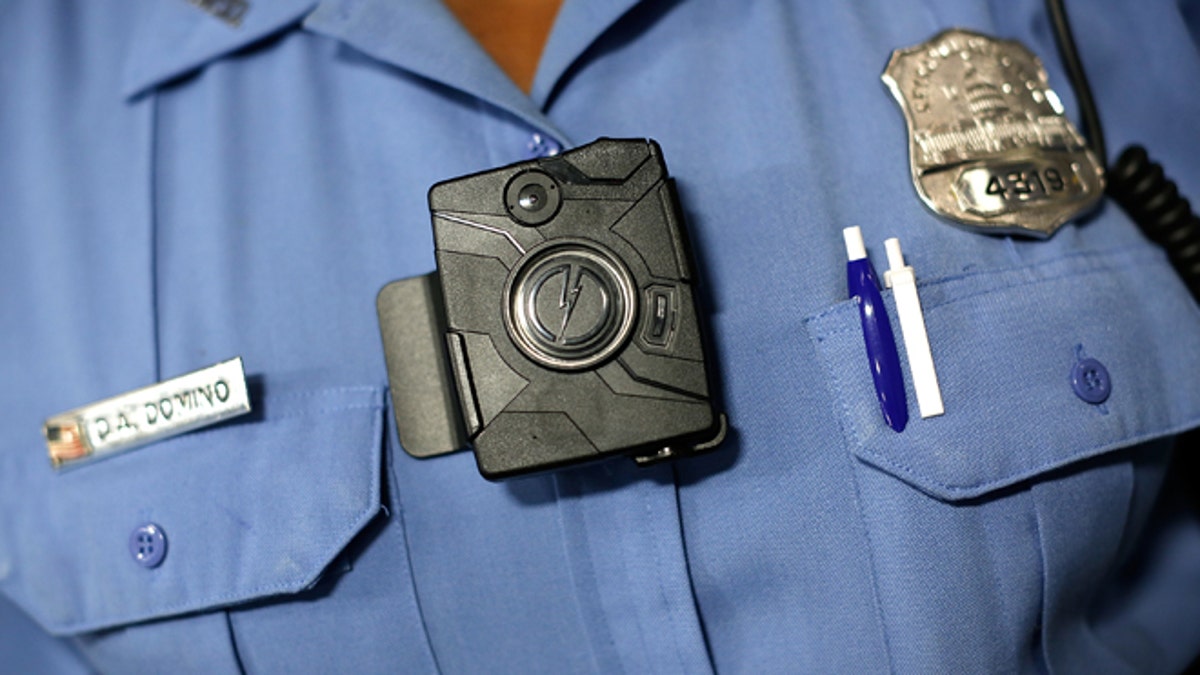
(Courtesy Accenture)
A presidential task force on policing called for increased use of body-worn cameras to improve police training and effectiveness while creating a level of transparency that builds a bridge between law enforcement and citizens. Last week, the Seattle Police Department launched a YouTube channel to share video of officer-citizen interactions as part of a pilot program, and in Iowa, the State Legislature just approved a bill that requires state police to wear body-worn cameras. Both of these initiatives were also designed to increase transparency.
Body-worn cameras are one of the hottest topics being discussed in public safety today. Police departments from San Diego to Spokane have already committed $1.6 million to acquire the cameras in what feels like a mad rush to purchase new technology. For law enforcement officials to use body-worn cameras fairly and effectively, however, they’ll need to think ahead about key issues, including the secure storage and analysis of sensitive data and citizen privacy.
“This arrest may be recorded for quality assurance purposes”
Body-worn cameras offer some clear and compelling benefits, including eliminating “he said, she said” disputes around the circumstances of an incident. Events such as the shooting in Ferguson, Missouri have ignited national debate over how front-line interactions between officers and citizens can be verified. With video evidence from body-worn cameras, police leaders and justice officials would have a new tool to validate eye-witness accounts and receive an unbiased detail of events.
Many police forces are highly motivated to use body-worn cameras to reduce complaints against officers. They trust that some complaints can be resolved by viewing video footage to establish the facts. If the claims are true, law enforcement agencies can use video footage to help re-train officers. If the claims are false, officers can be exonerated more quickly.
Pilot programs have indicated that even the wearing of body-worn cameras can impact the behavior of the officer and citizen, when both know they’re being recorded. After the Rialto Police Department in California deployed a camera pilot program in 2012, they saw a 60 percent reduction in use-of-force incidents and an 88 percent reduction in citizen complaints.
Clue catchers
Body-worn cameras can capture and record more information than a human eye. Once an officer activates a camera, it can capture information about everything in sight, including buildings (houses, apartment blocks, offices), vehicles (make, model, color, license plate number) and people (physical features, gender, age, attire). Some cameras, if GPS enabled, can record geo-coded, time-stamped data on locations, vehicles and people that can be analyzed to turn around leads, clues and other information to aid investigations.
Data deluge
That’s an extraordinary amount of data. And contrary to what the public may think, there are no officers on the police force who sit and watch video from all of the cameras, monitoring video streams 24/7. In order to make a body-worn camera truly effective, the data it generates must be governed by the same rules that apply to all important and sensitive data: it needs to be stored correctly and securely and correctly analyzed to deliver actionable insight.
Fortunately, technologies exist that can reduce the amount of data storage required (e.g., by scanning and reducing “blank spaces” within video footage, when there is no activity or people in view). In addition, police forces can deploy sophisticated analytic technologies to sift through heavy volumes of video data to identify patterns, behaviors and individuals, providing additional intelligence to support investigations and better manage front-line resources.
Final barriers
The final barrier for some citizens to accepting body-worn cameras is a concern for privacy, since police cameras record all interactions, including those with law-abiding citizens. To address privacy concerns, law enforcement agencies will need to be transparent about usage policies and take extensive measures to protect civil liberties. On the Seattle Police Department’s YouTube channel, for example, the department blurs the faces of civilians and scrubs the videos of sound.
Even with these concerns, it’s unlikely they’ll outweigh the potential benefits of body-worn cameras. In an Accenture survey of 4,000 citizens across eight countries last October, eight out of 10 supported the use of new and digital tools to improve police services and 80 percent of all respondents said they supported the use of body-worn cameras by police.
Deploying and managing body-worn cameras is a complex undertaking, but with the right procedures and policies in place, the possibilities for building trust, creating greater transparency and accountability between officers and citizens, and fostering stronger police-community relations are limitless.
Jody Weis is a Senior Director within Accenture’s public safety business in North America and a former Superintendent of the Chicago Police Department.
Wai-Ming Yu is Managing Director of Accenture’s North America State, Provincial and Local Public Safety practice.
